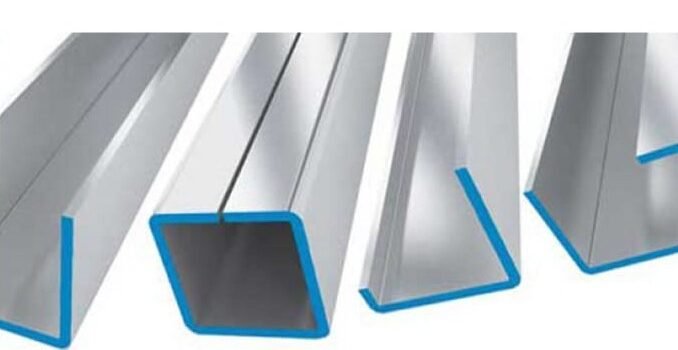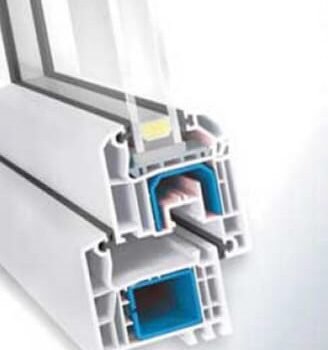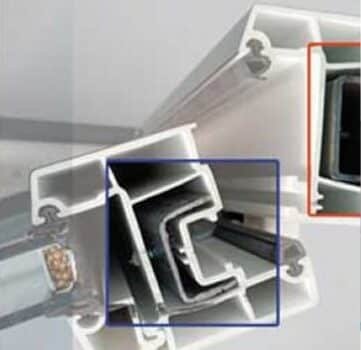
Introduction to Drywall Profiles
Drywall profiles serve as the backbone of contemporary interior design, playing an indispensable role in constructing secure and stable drywall systems. These profiles, which include elements such as studs, tracks, and channels, form the essential framework upon which drywall sheets are mounted. Their importance extends beyond mere support, as they significantly contribute to the overall durability and longevity of the structure.
In modern construction, choosing the right drywall profiles is crucial for achieving a successful interior design outcome. The selection process involves considering factors such as the type of structure, the specific requirements of the space, and the desired aesthetic. Different profiles are designed to meet various structural needs, from load-bearing walls to partition systems, each offering distinct advantages in terms of strength, flexibility, and ease of installation.
Moreover, the right drywall profile can enhance the performance of the entire drywall system. For instance, metal profiles, typically made of galvanized steel, provide excellent resistance to moisture and fire, making them suitable for use in areas prone to humidity or requiring higher fire safety standards. On the other hand, lighter profiles may be preferred in non-load-bearing applications where ease of handling and installation speed are priorities.
The impact of drywall profiles on an interior design project cannot be overstated. By ensuring that the underlying framework is robust and well-suited to the specific demands of the project, designers and builders can achieve a high-quality finish that meets both functional and aesthetic goals. As such, a thorough understanding of drywall profiles and their applications is essential for anyone involved in the planning and execution of interior design projects.
Understanding U Profiles
U profiles are integral components in drywall systems, playing a crucial role in ensuring stability at wall and ceiling joints. These profiles are typically constructed from durable steel, which not only provides robust support but also ensures longevity, making them a preferred choice in many construction projects. The high-strength steel used in U profiles resists deformation and maintains its shape under pressure, thus offering a reliable framework for drywall installations.
One of the primary benefits of using U profiles is their ability to provide a stable base for attaching drywall sheets. This stability is essential in maintaining the structural integrity of walls and ceilings, especially in areas subject to high stress or movement. U profiles help distribute loads evenly, reducing the risk of cracks and damage to the drywall. Their robust nature also makes them suitable for a variety of environments, including residential, commercial, and industrial settings.
In practical applications, U profiles are often used in conjunction with other drywall components, such as C profiles, to create a comprehensive framing system. This combination enhances the overall stability and strength of the drywall construction. The versatility of U profiles allows them to be used in various configurations, adapting to the specific requirements of each project. For instance, they can be used to frame doorways, windows, and other openings, providing a clean and stable edge for finishing.
Another significant advantage of U profiles is their ease of installation. Their standardized dimensions and compatibility with other drywall components simplify the construction process, reducing labor costs and time. Additionally, U profiles can be easily cut and shaped to fit specific project needs, offering flexibility during the installation phase. This adaptability makes them an ideal choice for both new constructions and renovation projects.
Overall, U profiles are a vital element in drywall systems, providing the necessary strength and durability required for high-quality interior construction. Their practical benefits, including stability, versatility, and ease of installation, make them an essential component for achieving a reliable and long-lasting drywall structure.

Exploring C Profiles
C profiles are essential components in the construction of wall and ceiling assemblies, thanks to their lightweight and flexible structure. These profiles are typically fabricated from galvanized steel, which not only ensures durability but also offers a significant reduction in weight compared to traditional materials. The inherent flexibility of C profiles allows them to be easily manipulated during installation, streamlining the labor process and significantly speeding up the assembly time.
One of the primary advantages of C profiles is their portability. Their lightweight nature means that transporting these profiles to and around the construction site is far less cumbersome, thereby reducing the logistical challenges often faced during interior design projects. Additionally, the ease of handling C profiles minimizes the physical strain on workers, promoting a safer and more efficient work environment.
Installation of C profiles is straightforward, requiring minimal tools and effort. The standard design of these profiles includes pre-punched holes, facilitating quick attachment to other structural elements and simplifying the alignment process. This not only enhances the precision of the assembly but also reduces the likelihood of errors, ensuring a high-quality finish.
From a functional perspective, C profiles contribute significantly to the rigidity and stability of wall and ceiling systems. Their structural integrity ensures that the assembled framework can support various types of finishes, including drywall, plaster, and even heavier materials like tiles. This versatility makes C profiles an ideal choice for a wide range of interior design applications.
Aesthetically, C profiles offer a clean and seamless appearance, which is crucial in creating modern and sleek interior spaces. The uniformity and consistency provided by these profiles allow for smooth surfaces that can be easily decorated or painted, aligning with the desired visual outcomes of the project. By integrating C profiles into your interior design, you ensure both functional excellence and aesthetic appeal, making them a valuable asset in any construction endeavor.

Selecting the Right Drywall Profile for Your Project
Choosing the appropriate drywall profile for your interior design project is a critical step that can significantly impact the overall outcome. The selection process involves careful consideration of various factors to ensure the chosen profile aligns with the project’s specific requirements, material properties, and aesthetic goals. Understanding these elements will help you make an informed decision and achieve a seamless integration into your design.
First and foremost, assess the project’s structural needs. The drywall profile you select should provide adequate support and stability for the intended application. For instance, profiles used in high-traffic areas or load-bearing walls must be robust and durable. On the other hand, profiles for decorative purposes or non-load-bearing partitions can be lighter and more flexible. Evaluating the structural demands will guide you toward profiles that offer the necessary strength and performance.
Material properties also play a crucial role in the selection process. Different drywall profiles are made from various materials, including steel, aluminum, and composite materials. Each material has distinct characteristics, such as fire resistance, moisture resistance, and sound insulation. For example, steel profiles are known for their strength and durability, making them suitable for heavy-duty applications. Conversely, aluminum profiles are lightweight and corrosion-resistant, ideal for areas exposed to moisture.
Another essential factor to consider is the aesthetic objective of your project. Drywall profiles come in an array of shapes and finishes, allowing you to achieve the desired visual effect. Whether you aim for a sleek, modern look or a more traditional appearance, selecting the right profile can enhance the overall design and complement the architectural style. Pay attention to the profile’s shape, size, and finish to ensure it aligns with your design vision.
Contact Us
At Steeling, we offer a comprehensive range of drywall profiles designed to meet diverse project needs. Our products are manufactured to the highest standards, ensuring quality and reliability. Additionally, we provide technical support services to assist you in selecting the most suitable profiles for your specific requirements. Our commitment to excellence ensures that you achieve optimal results in your interior design projects. Contact Us for your drywall profile needs.